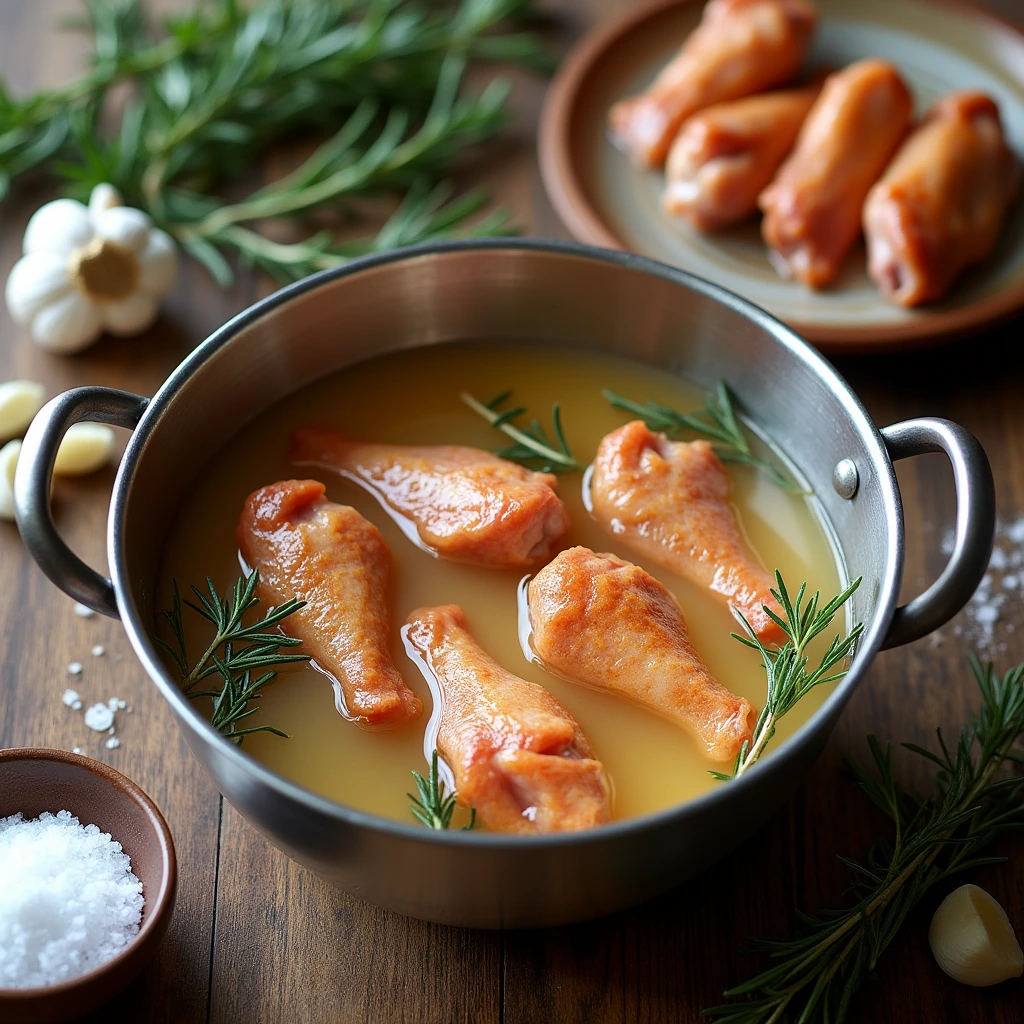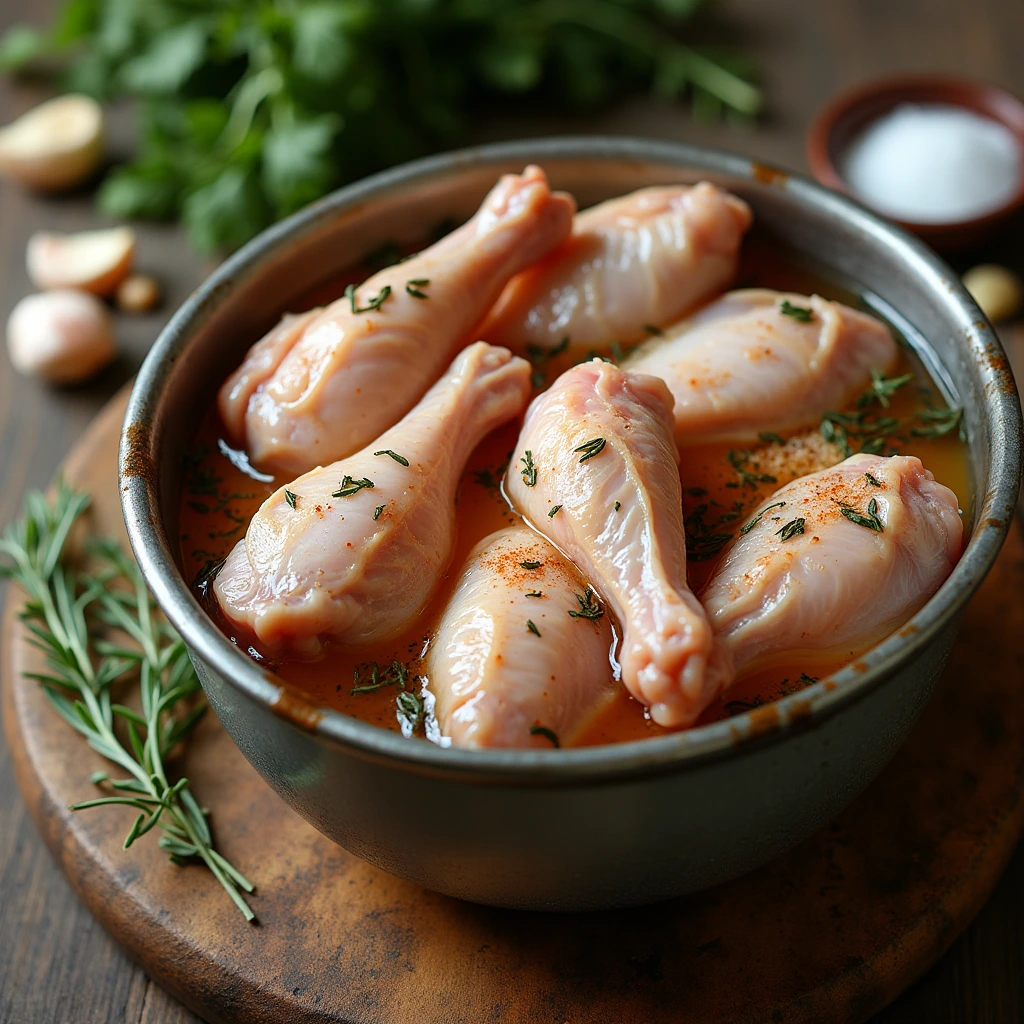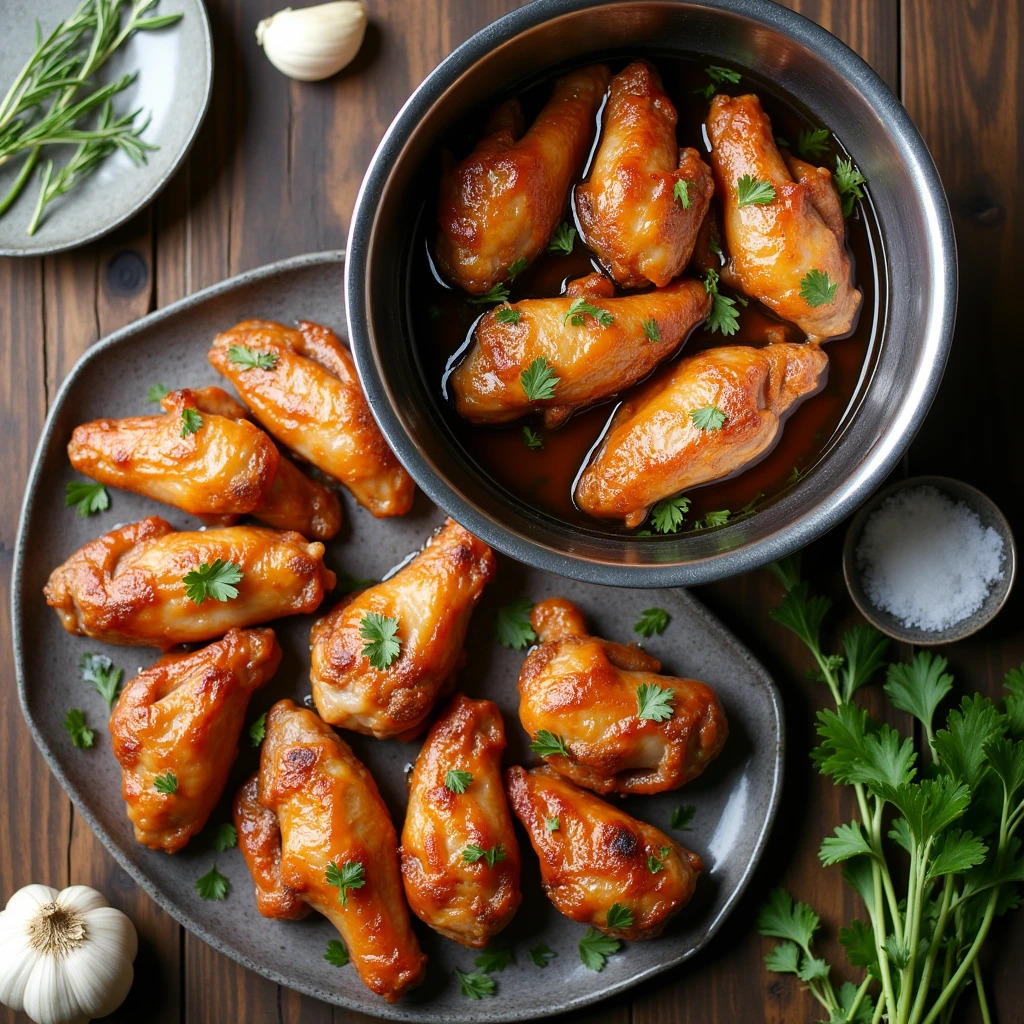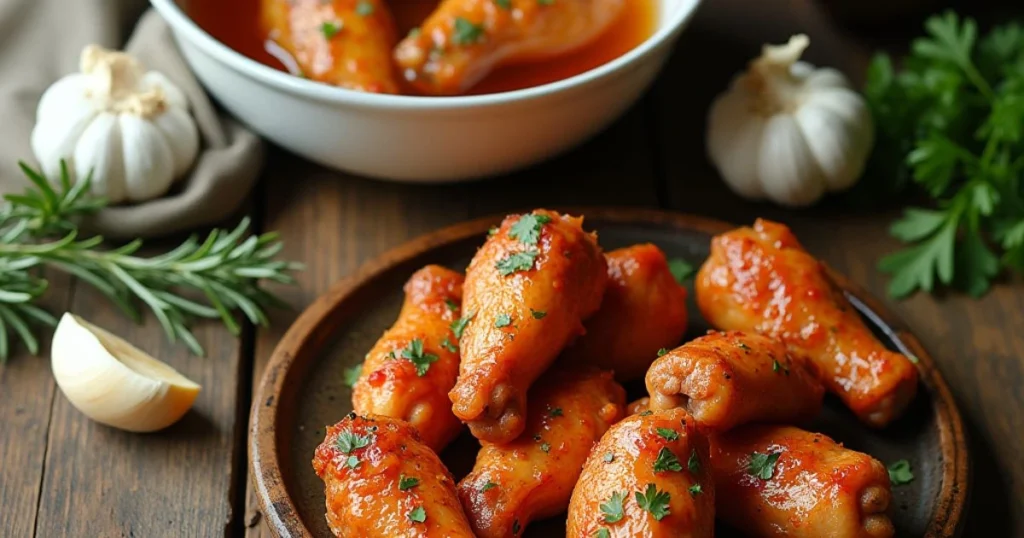Table of Contents
If you’re someone who loves chicken wings, you probably know there’s nothing quite like biting into a wing that’s perfectly crispy on the outside, juicy on the inside, and packed with flavor. But what makes that perfect wing possible? The secret lies in one simple yet powerful technique: brining. Brining chicken wings ensures they remain tender, juicy, and full of flavor, whether you plan to grill, bake, or fry them.
In this guide, we’re going to dive into the essential details of brining chicken wings—why it works, how to do it, and how it can take your wing game to a whole new level. By the time you finish reading, you’ll have all the knowledge you need to make the perfect brined chicken wings every time.
What Is Brining and Why Should You Brine Chicken Wings?
The Science Behind Brining Chicken Wings
When it comes to cooking chicken wings, moisture is key. Brining is a process where you soak meat in a solution of water, salt, and other flavor-enhancing ingredients. The salt in the brine causes the muscle fibers in the chicken to absorb moisture, allowing them to hold onto that moisture during cooking. This is the key to juicy wings, as it prevents them from drying out, especially when they’re grilled or fried at high heat.
Moreover, brining doesn’t just add moisture—it also infuses the meat with flavor. As the chicken absorbs the brine, the salt and other seasoning ingredients like herbs, garlic, or spices are absorbed, resulting in a flavorful profile that permeates the meat.
Why Brining Chicken Wings Works
- Moisture Retention: Salt breaks down muscle fibers, allowing the chicken to retain moisture during cooking, which prevents the wings from becoming dry.
- Flavor Infusion: The brine allows seasonings to penetrate deeper into the meat, making each bite more flavorful.
- Tenderization: Salt also helps break down tough muscle proteins, ensuring the meat stays tender and juicy.


The Basic Brining Process for Chicken Wings
Step-by-Step Guide to Brining Chicken Wings
Brining chicken wings is a relatively simple process. With just a few steps, you can ensure that your wings come out tender and flavorful.
Step 1: Prepare the Brine Solution
To begin, you need to create the brine. The basic components of a brine are water, salt, and sugar. For the most basic brine, mix these ingredients in the following proportions:
| Ingredient | Amount (for 1 lb. wings) |
|---|---|
| Water | 4 cups |
| Salt (kosher or sea) | 1/4 cup |
| Sugar (brown or white) | 2 tbsp |
Once you’ve added your salt and sugar to the water, stir the mixture until it’s fully dissolved. If you’re interested in adding more flavor, this is when you can include other ingredients like garlic, herbs, or citrus. For example, a few sprigs of rosemary or some crushed garlic cloves can make your brine even more aromatic.
Step 2: Brine the Wings
Once your brine is ready, submerge your chicken wings completely in the solution. You’ll want to brine your wings in the refrigerator to ensure food safety. The wings should be left to soak for at least 1 hour, but no longer than 4 hours—longer brining can result in overly salty wings.
- Tip: If you’re brining a larger batch of wings, consider using a resealable plastic bag to ensure the wings are fully submerged.
Step 3: Rinse and Dry the Wings
After brining, it’s important to rinse the wings to remove any excess salt. Rinsing helps balance the seasoning and ensures your wings are flavorful without being too salty. After rinsing, pat your wings dry with paper towels. This step is crucial for achieving that crispy skin when cooking, whether you’re grilling or frying the wings.
Flavoring Your Brine: Tips for Adding Extra Taste to Your Wings
While the basic brine of salt, sugar, and water is effective, there are plenty of ways to boost the flavor profile with different herbs, spices, and other seasonings.
Herbs and Spices for Brining Chicken Wings
- Garlic: A few crushed garlic cloves add an aromatic kick.
- Rosemary: Fresh rosemary provides a savory, fragrant note.
- Peppercorns: Whole black peppercorns bring a touch of heat and flavor.
- Paprika: For a subtle smoky flavor.
- Chili Flakes: Add a bit of spice to your wings if you want them with a kick.
Citrus for Brightness
Adding citrus to your brine can infuse the wings with a zesty, refreshing flavor. Try adding the zest or juice of a lemon, lime, or orange to your brine for an extra layer of flavor that complements the richness of the chicken.
Sweet and Savory Brine Ideas
- Sweet Brine: Brown sugar or honey can balance the saltiness and give your wings a caramelized finish when cooking.
- Savory Brine: Soy sauce or Worcestershire sauce can be added for a deeper umami flavor that makes the wings more complex.
How to Cook Brined Chicken Wings
Once your chicken wings are brined, it’s time to cook them. The beauty of brined chicken wings is that they remain juicy no matter the cooking method. Here’s how to cook them to perfection:
Best Cooking Methods for Brined Chicken Wings
- Grilling: Preheat your grill to medium-high heat. Grill the wings for about 20 minutes, turning every 5 minutes, until the skin is crispy and the internal temperature reaches 165°F.
- Baking: Preheat the oven to 400°F. Place the wings on a baking rack (to allow air circulation and crisping) and bake for about 25-30 minutes, flipping halfway through.
- Frying: Heat oil in a deep fryer or large skillet to 350°F. Fry the wings for 8-10 minutes until they are golden brown and crispy.
Tips for Extra Crispy Wings
- Dry the Wings: Always make sure the wings are dry before cooking. Moisture on the surface of the chicken will steam it rather than crisp it.
- Use a Wire Rack for Baking: When baking, place the wings on a wire rack to help them crisp evenly.
- Double-Fry for Extra Crunch: If frying, consider double-frying the wings for a super crispy exterior.


Common Brining Mistakes to Avoid
While brining is an easy process, there are a few common mistakes that could lead to less-than-ideal results.
Over-Brining Chicken Wings
Leaving your wings in the brine for too long can make them overly salty and soft. It’s important to keep track of your brining time. For wings, 1 to 4 hours is ideal. Anything longer can result in an unpleasant texture and too much salt.
Not Rinsing the Wings After Brining
If you skip the step of rinsing your wings after brining, they might end up too salty. Make sure you rinse them well to remove excess brine before drying and cooking.
Using the Wrong Salt
Kosher salt is the best choice for brining due to its large crystals and clean flavor. Table salt is too fine and can make your brine too salty, even if you use the same measurements.
Frequently Asked Questions About Brining Chicken Wings
Can You Brine Chicken Wings Overnight?
While brining overnight is a common practice for other meats, it’s not ideal for chicken wings. Due to their smaller size, wings can absorb too much salt if left for too long. Stick to brining them for 1 to 4 hours for the best results.
Do I Need to Add Sugar to the Brine?
Sugar isn’t strictly necessary, but it can help balance the saltiness and promote caramelization when cooking. If you prefer less sweetness, you can leave it out or use a small amount.
Can You Brine Frozen Chicken Wings?
Yes, you can brine frozen chicken wings, but it’s best to thaw them first before brining. Thawed wings will absorb the brine better, resulting in better texture and flavor.
What’s the Difference Between Brining and Marinating?
While both methods involve soaking meat in a flavorful solution, brining is focused on adding moisture and tenderness, whereas marinating is more about flavor infusion. Brining helps retain juiciness while cooking, while marinating primarily enhances taste.
Conclusion: Unlock the Secret to Perfect Brined Chicken Wings
Brining is the ultimate secret to achieving perfectly juicy and flavorful chicken wings. It’s a simple process that makes a huge difference in texture and taste. Whether you’re preparing wings for a weeknight dinner or a party, brining will ensure they turn out tender, juicy, and bursting with flavor every time.
Now that you know the basics, it’s time to start experimenting with different brine recipes. Add your own flair by playing with herbs, spices, and sweetness to create your own signature brine. So go ahead—brine your wings, cook them up, and enjoy the tender, flavorful results!
Tell us how did you find this recipe?
There are no reviews yet. Be the first one to write one.


1 thought on “The Secret to Perfect Brining Chicken Wings: 3 Mistakes to Avoid”
Comments are closed.